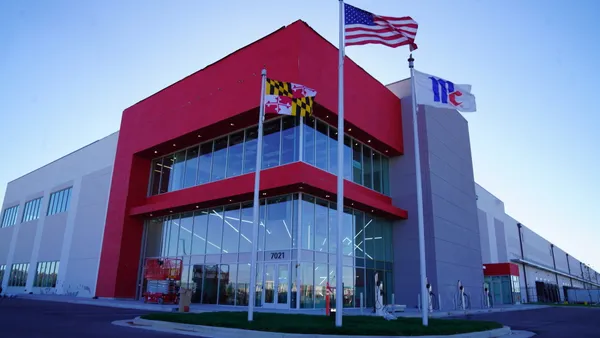The CIO's role has moved from a technology service provider to that of a strategic advisor, playing a central role in the future of the business. In the past, someone with a pure STEM background could have been a successful fit for the CIO role. However, the Transformative CIO is someone with a diverse background – from MBAs, to data science professionals, and might even come from a line of business. Digital is core to their background, and they know how to use technologies across various business processes for rapid improvement. This person understands the business objectives, can communicate and influence in the boardroom and works with line-of-business leaders daily to effectuate results.
The CIO of tomorrow
What capabilities will the CIO of tomorrow need and how should they align with the business to adopt a “future-back” approach?
Fortune favors the bold
Understanding future trends in the technology sector and where the market is headed to help future-proof the business is a crucial part of the role for the Transformative CIO. While it was difficult to see a global pandemic coming, the Transformative CIO is always thinking about what shocks or unexpected events could be around the corner. And, if a business does not have a culture of taking risks, this task can be even more difficult. In addition, the adoption of a growth mindset and promoting and advocating a culture of change and transformation across the business is extremely important.
Five ways to de-risk innovation
1. Becoming a (thought) leader
Tomorrow's CIO needs to establish themselves as a technology and business leader. On the technology side, the Transformative CIO must do whatever is required across the organization's infrastructure model and applications to help develop products and go to market faster. Beyond the technology stack, the CIOs priorities must include ways to bolster enterprise resiliency and enable a better customer experience.
However, the CIO must help drive the business agenda and deliver capabilities across the enterprise to help cut costs, improve revenues and increase overall competitiveness. And of course, the Transformative CIO needs to figure out how to do this in an effective, efficient manner, communicating that vision at the board level where leaders are focused on governance, stakeholders, risk and the environment.
2. Getting the right balance
The CIO of tomorrow requires the right combination of technical depth and strategic business vision. They need to be able to understand and deliver technology products and services. But an organization doesn't want to over-index and end up with a purely tech-focused CIO, who can fix technical problems but can't see what the future holds and how the company needs to transform. At the same time, the business doesn't need somebody who can't identify what issues are hindering operational efficiency and only wants to talk about emerging technologies.
3. Integration and Innovation
The ideal CIO to meet tomorrow's business challenges is one who can synthesize technologies and capabilities, understanding how both can be leveraged to drive forward the digital road map of the business. To achieve this, a CIO doesn't need to be a futurist, but they must be able to weave new technologies and ideas into their organization. If we think about the history of innovation, often the winners are those companies that adopt new concepts from external sources and either mix them together with other innovative ideas or take them to the next level. The Transformative CIO needs a pulse on the market and must understand emerging technologies, so they can bring them into their business where they are most needed.
4. Moving from projects to products
The Transformative CIO will facilitate and drive the maturation of product-centric and agile models across their enterprise, as well as broker the services required for the enablement of quick technology integration. This requires the CIO to put in place a cost-effective, agile infrastructure to support bringing new products to market. They will need to help solve key challenges facing the business, including how it can increasingly shift from “projects” to “products” and build the trusted data and intelligence capabilities to enable better decision-making faster.
5. The future-back approach
Thriving in a post-pandemic environment — placing humans at the center, leveraging technologies with greater speed and quickly scaling innovation — will require a new approach. Future-back planning connects megatrend-based scenarios with concrete strategic actions, enabling companies to position themselves today for long-term success. Increasingly, as the Transformative CIO drives the new concept of business-led IT, their role will become that of a facilitator, business connector and value driver. Instead of just running the organization's IT, their role will evolve in bringing new technologies into the business, creating innovative services or capabilities, and continually adding the firepower of external alliances and partners to help reframe the organization's future and build competitive advantage.
Discover how EY is working with CIOs to support their agenda.










